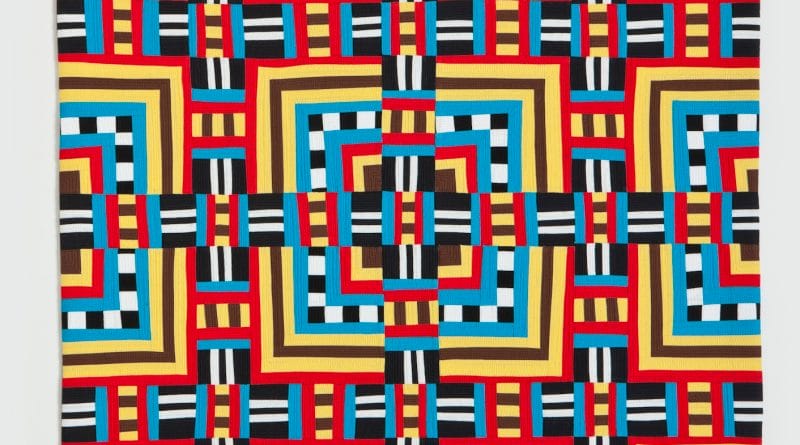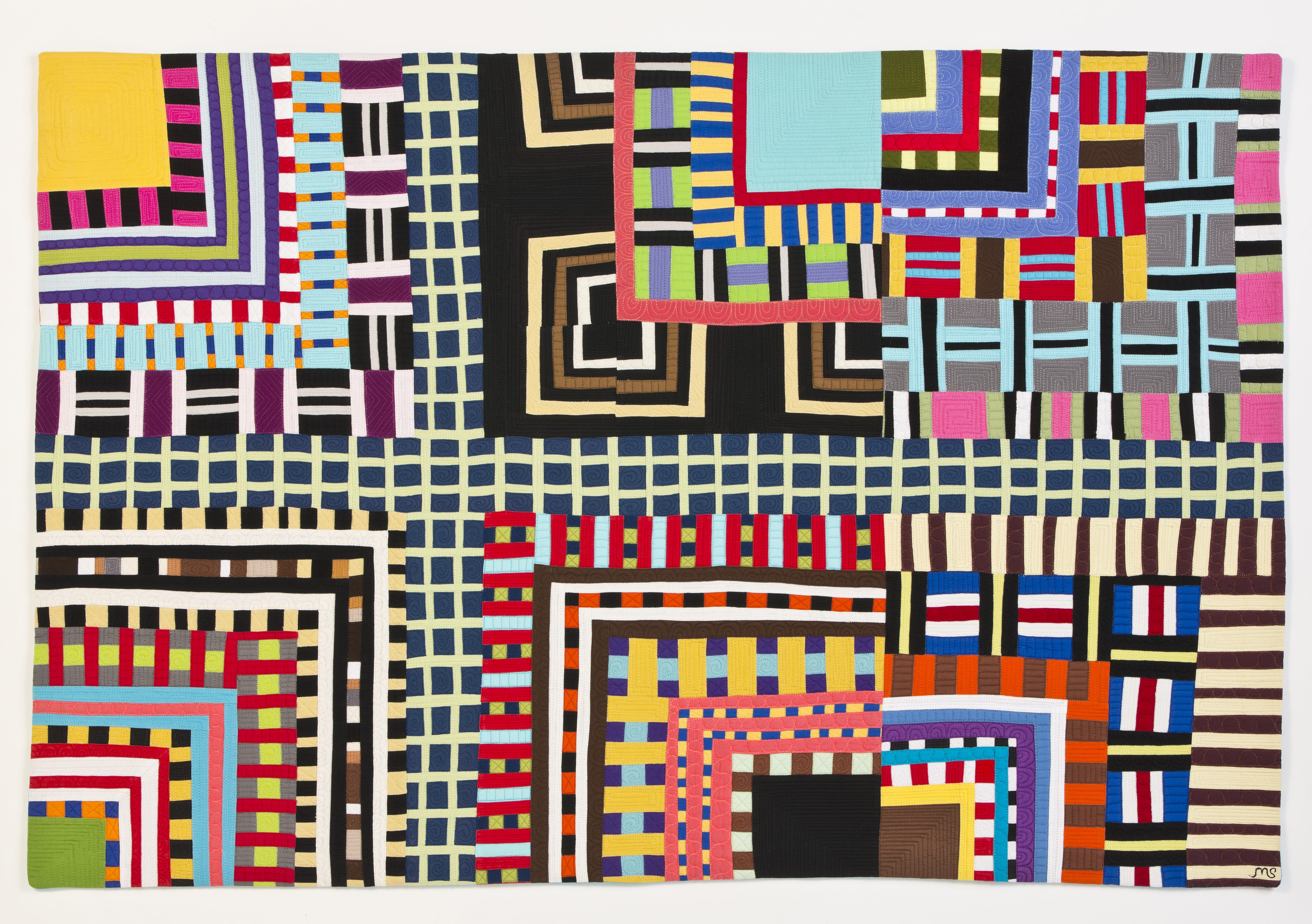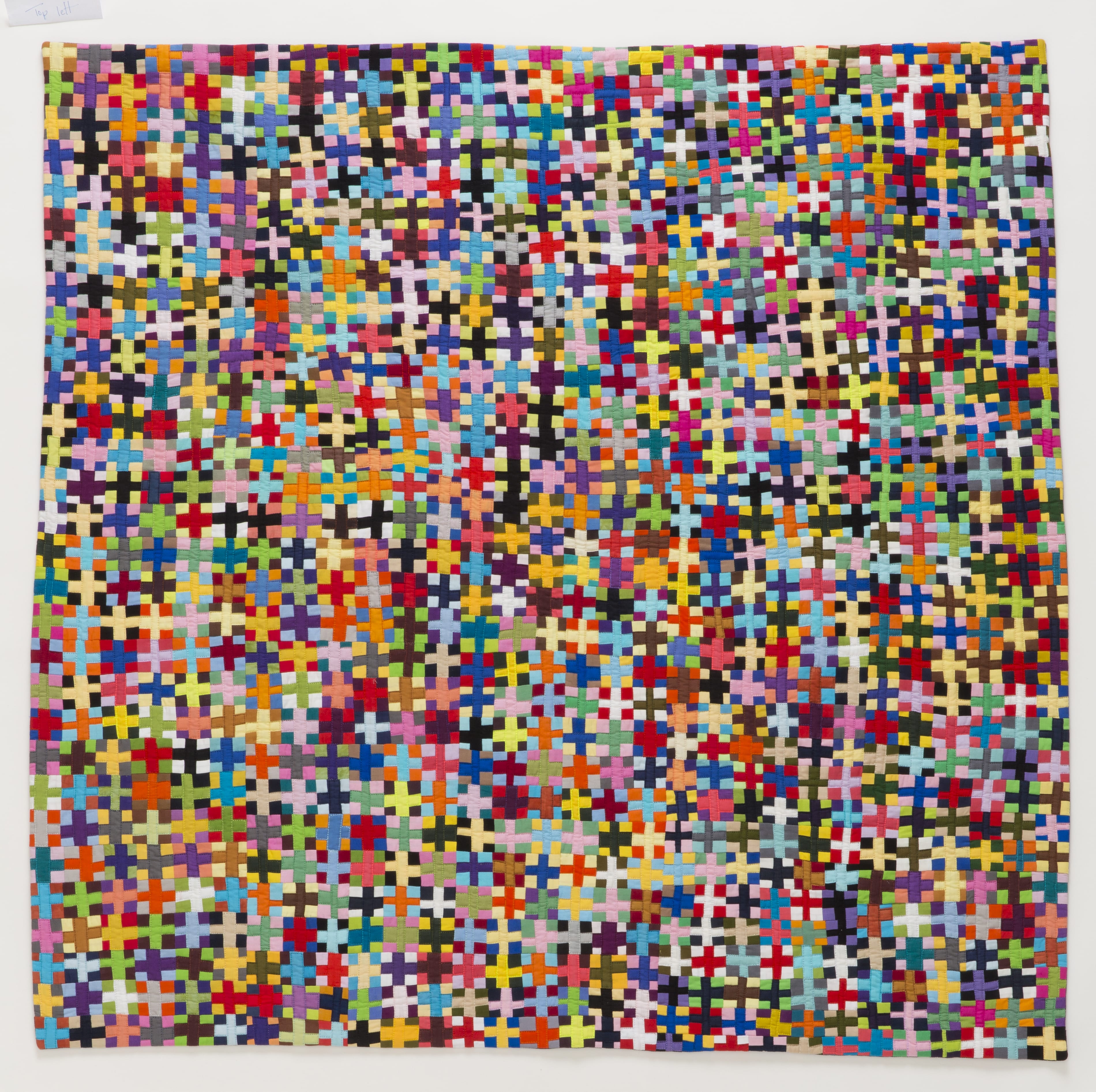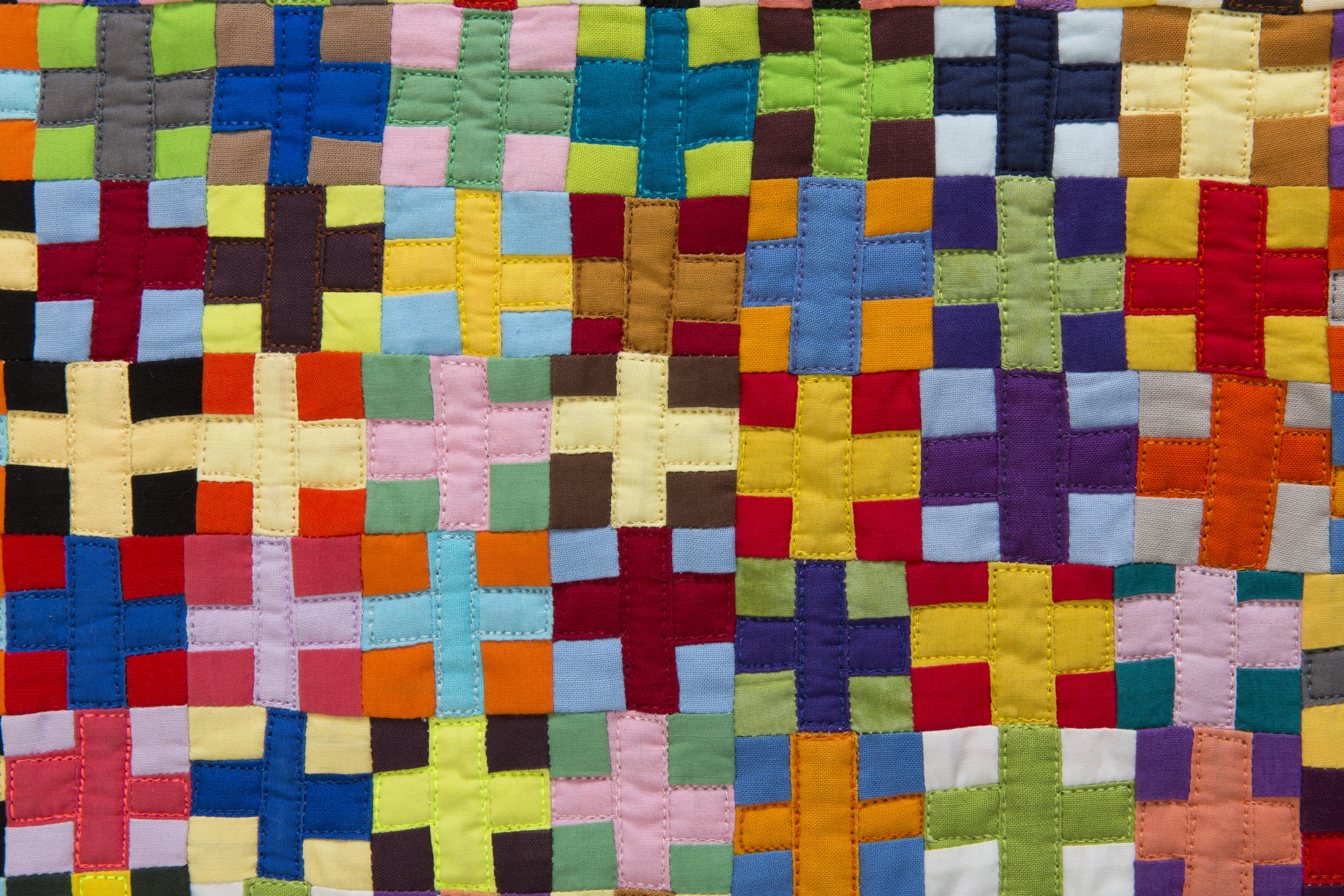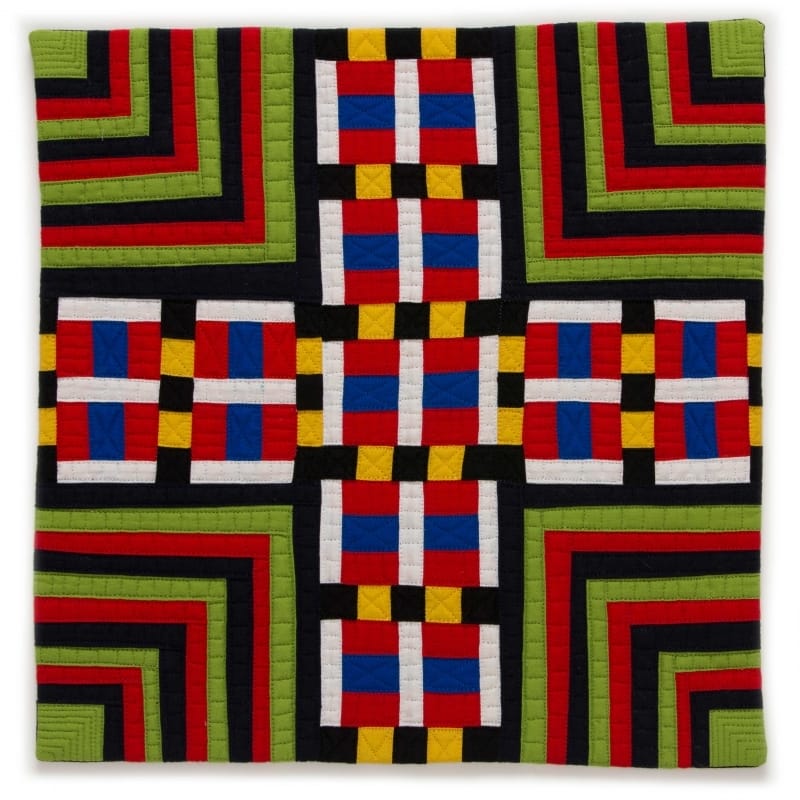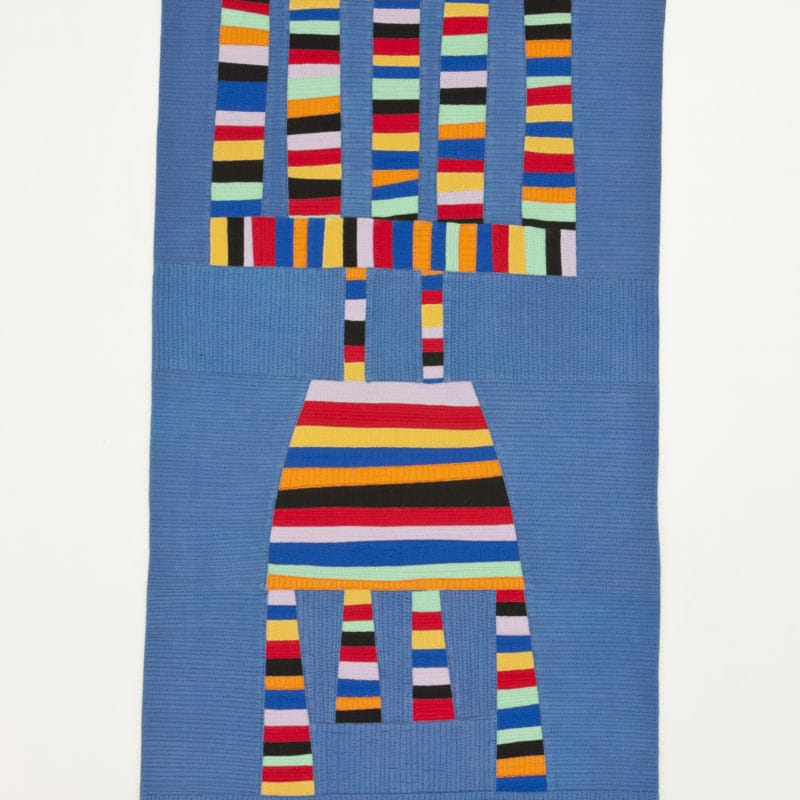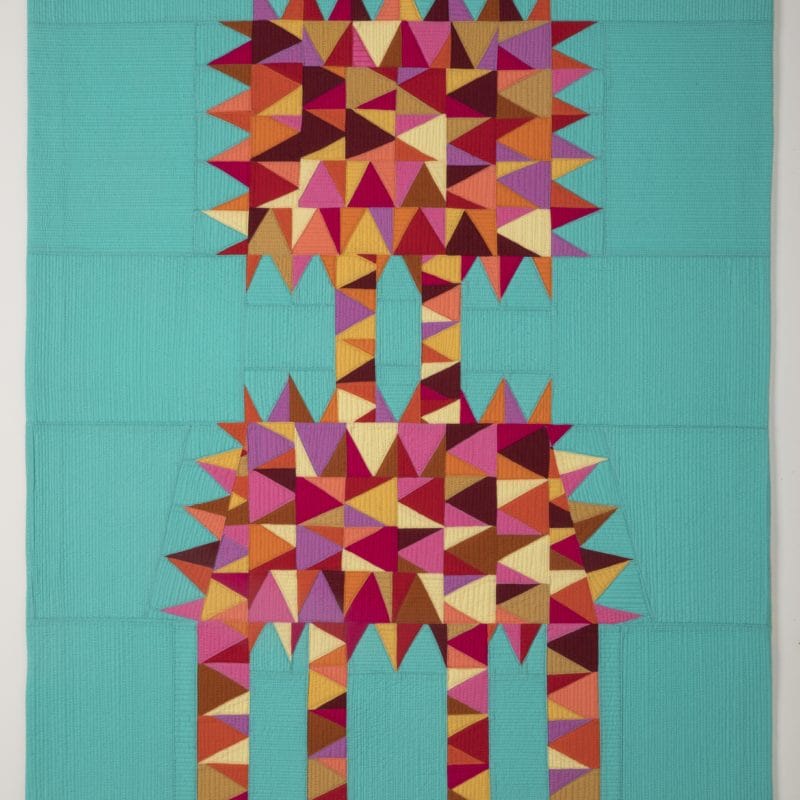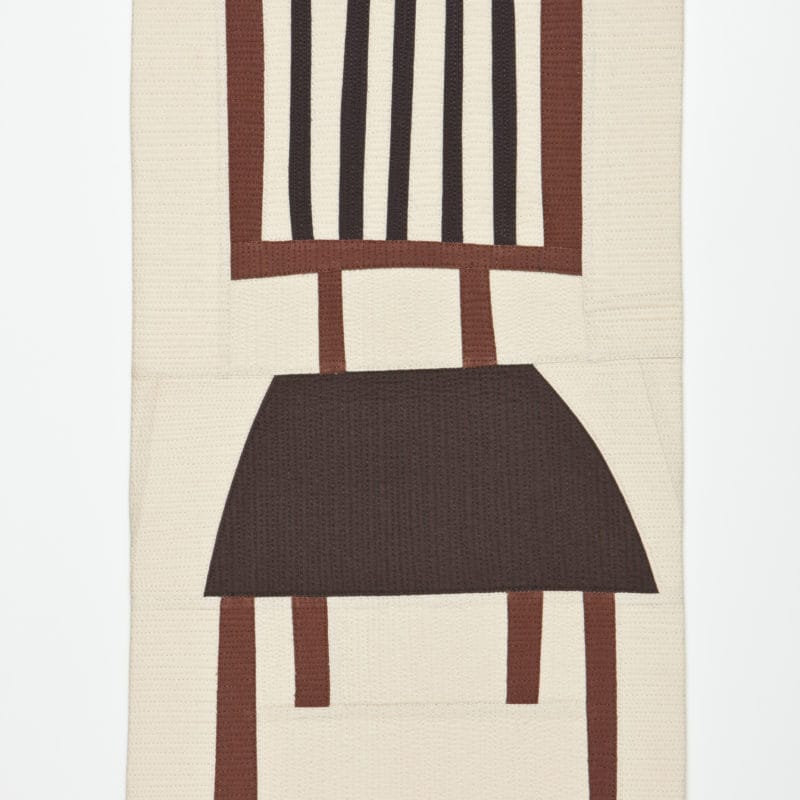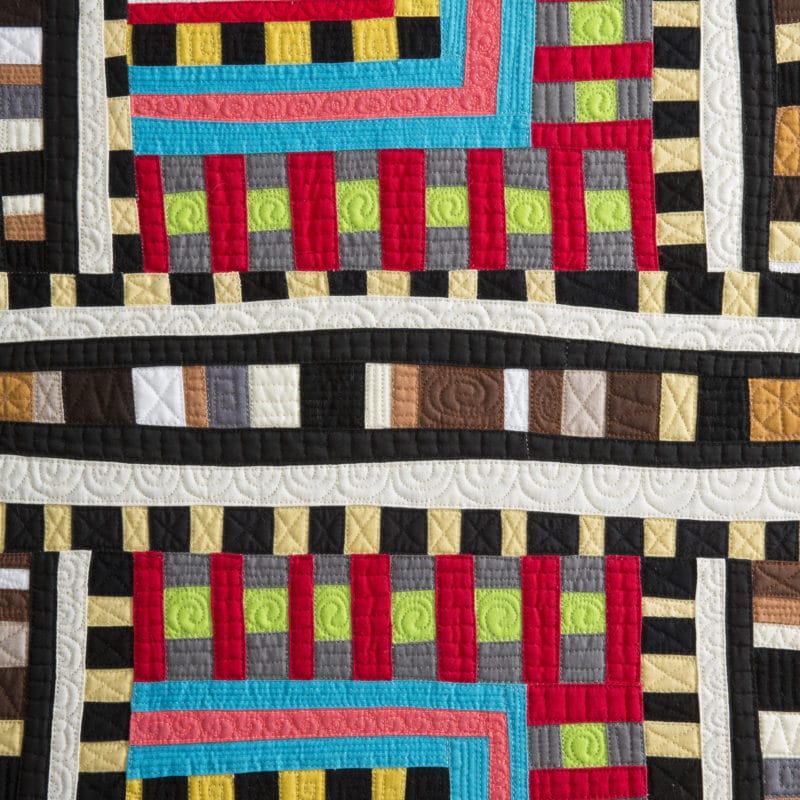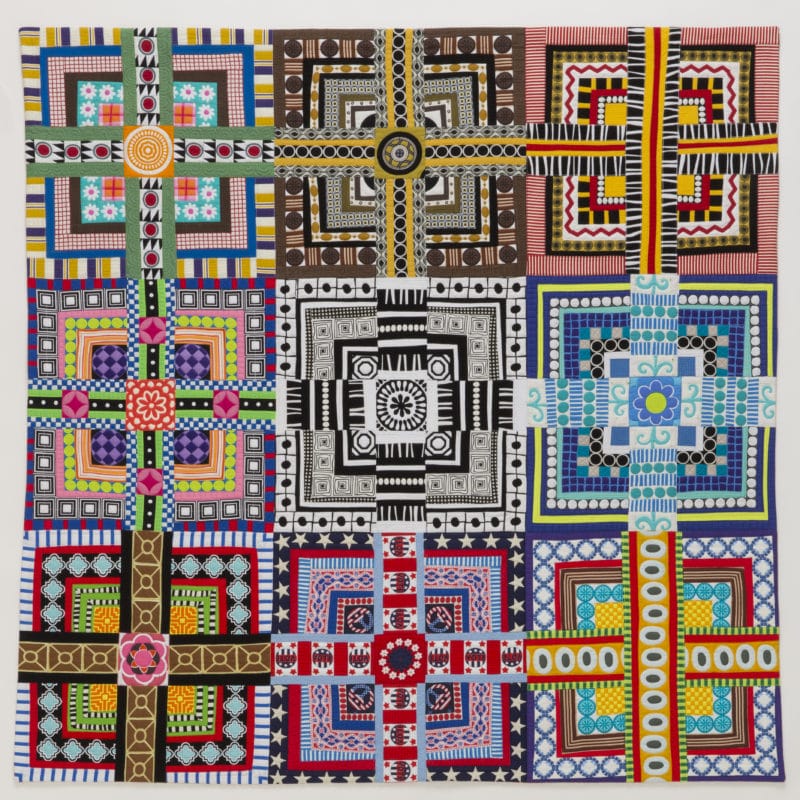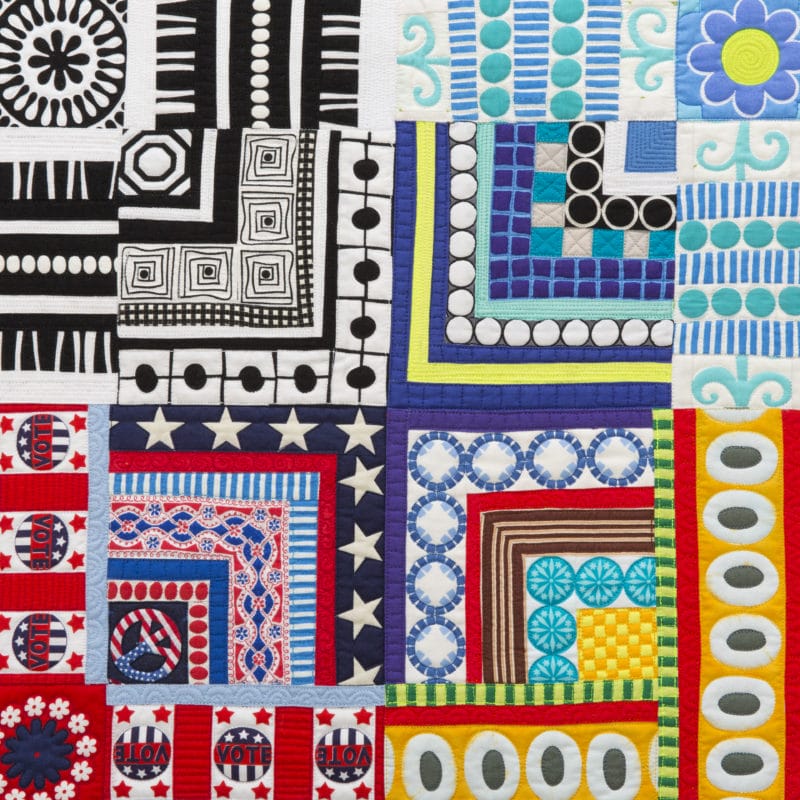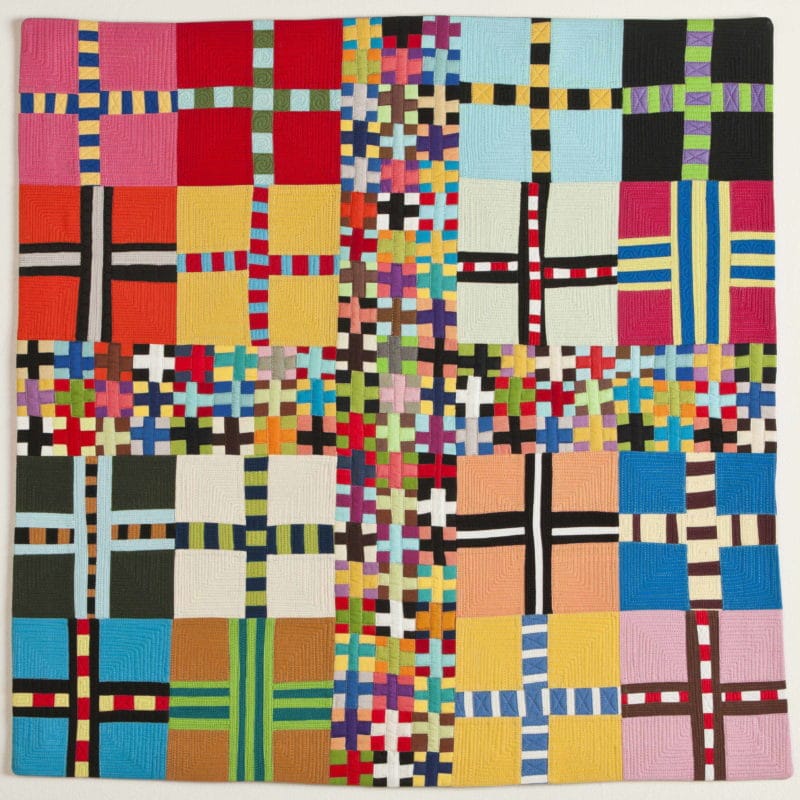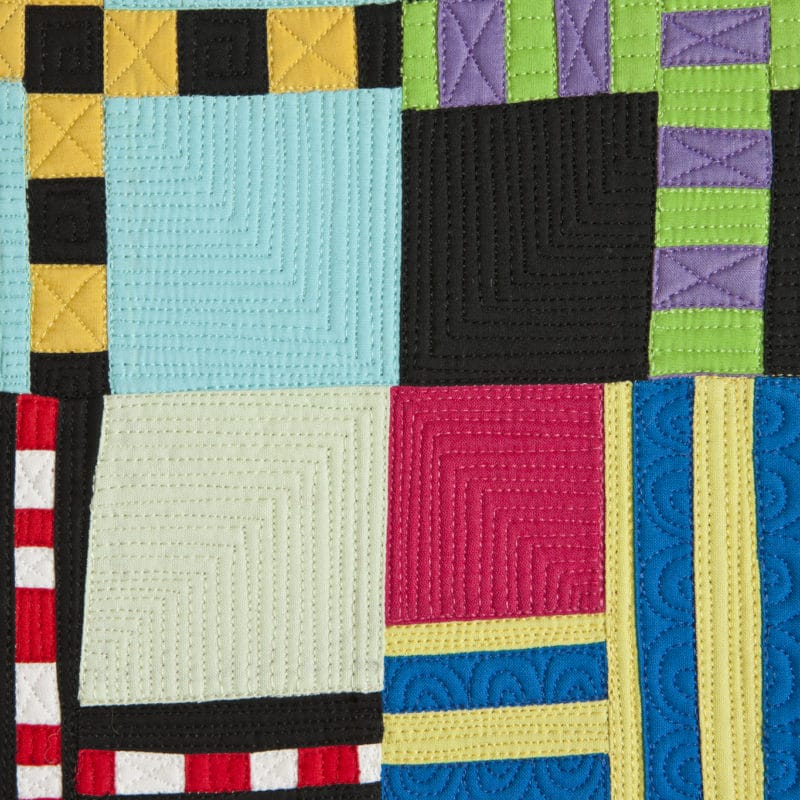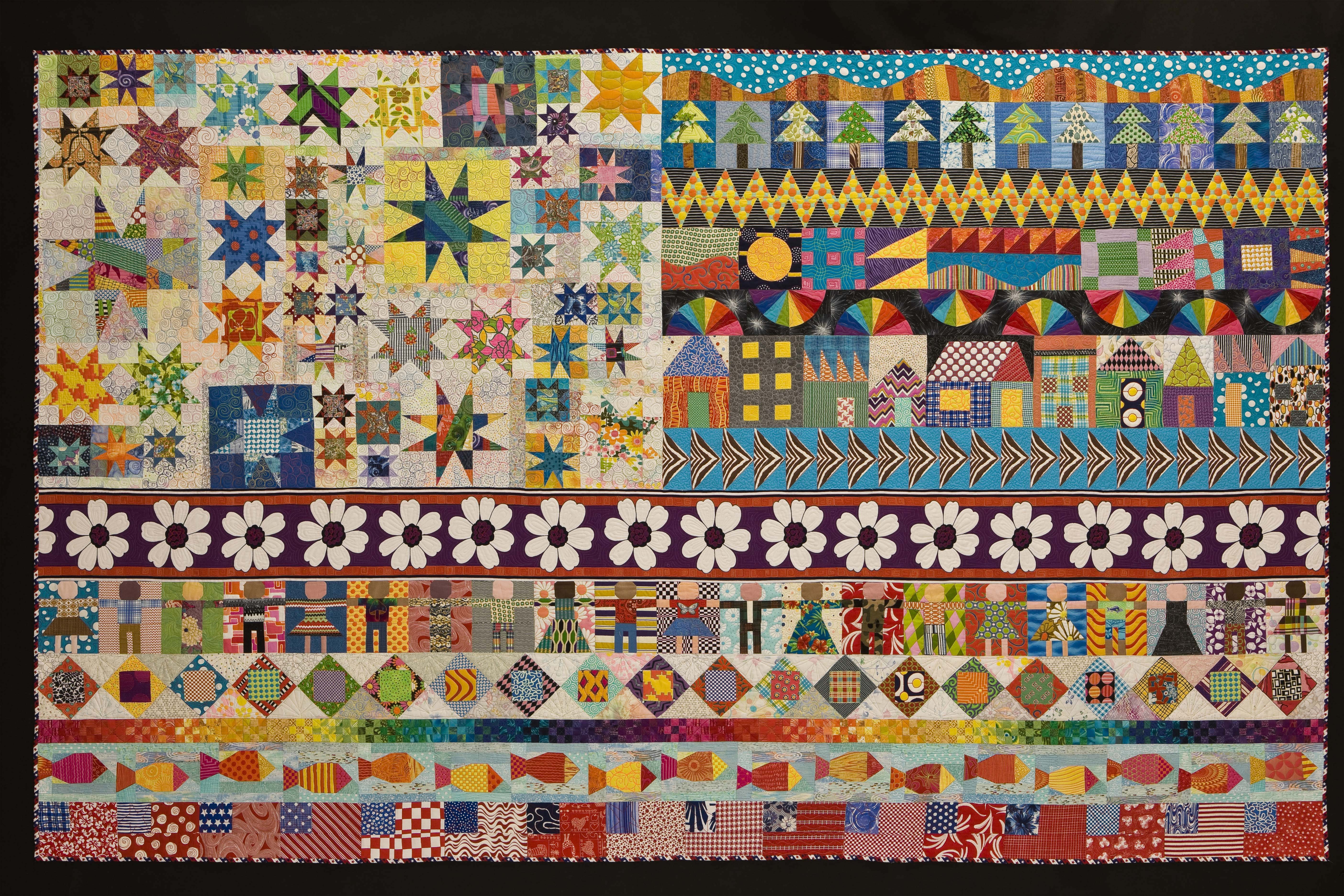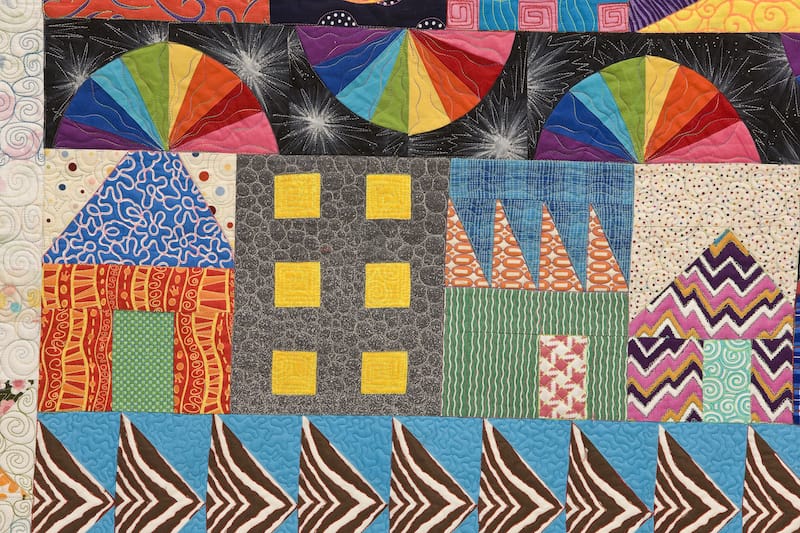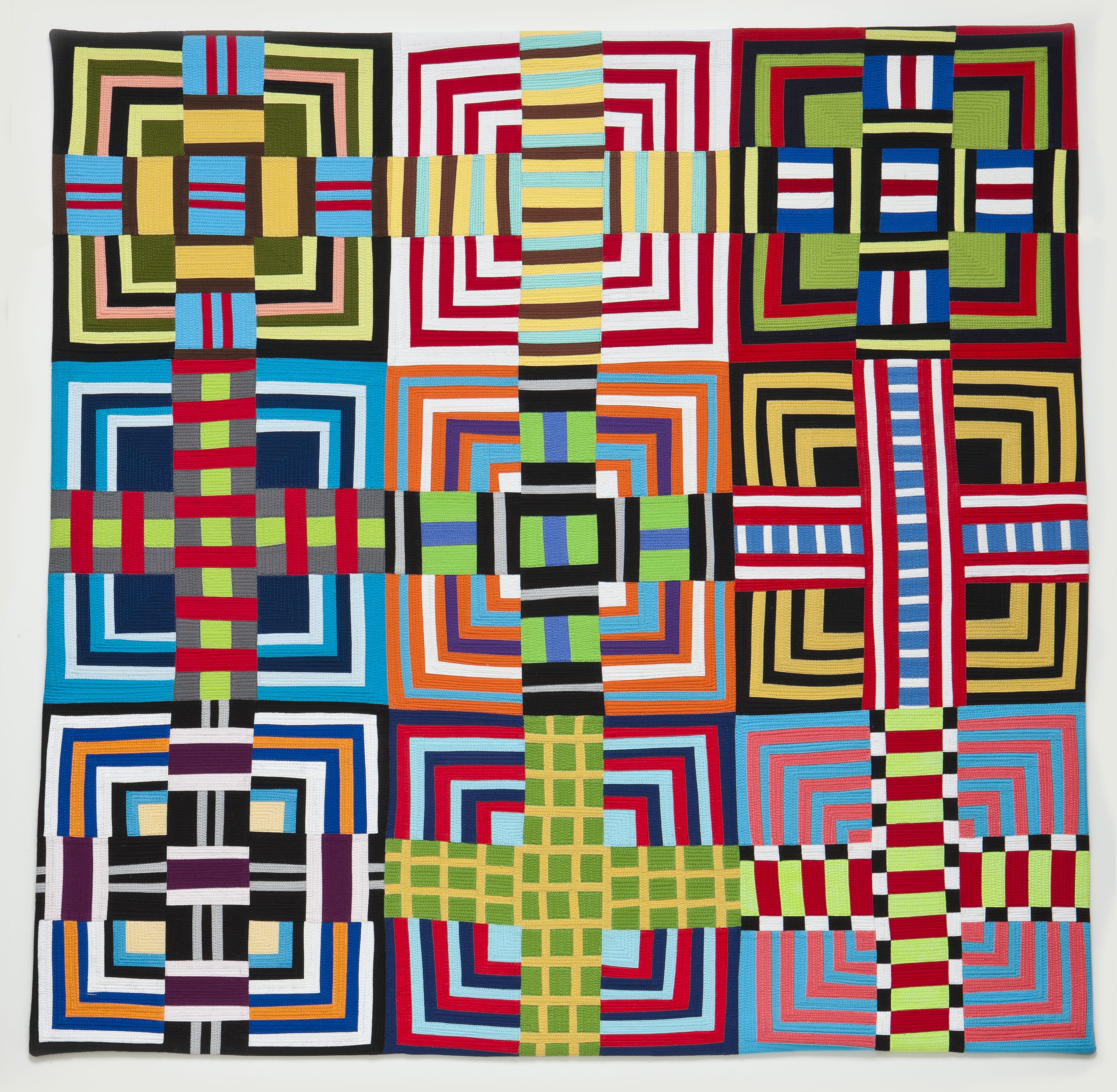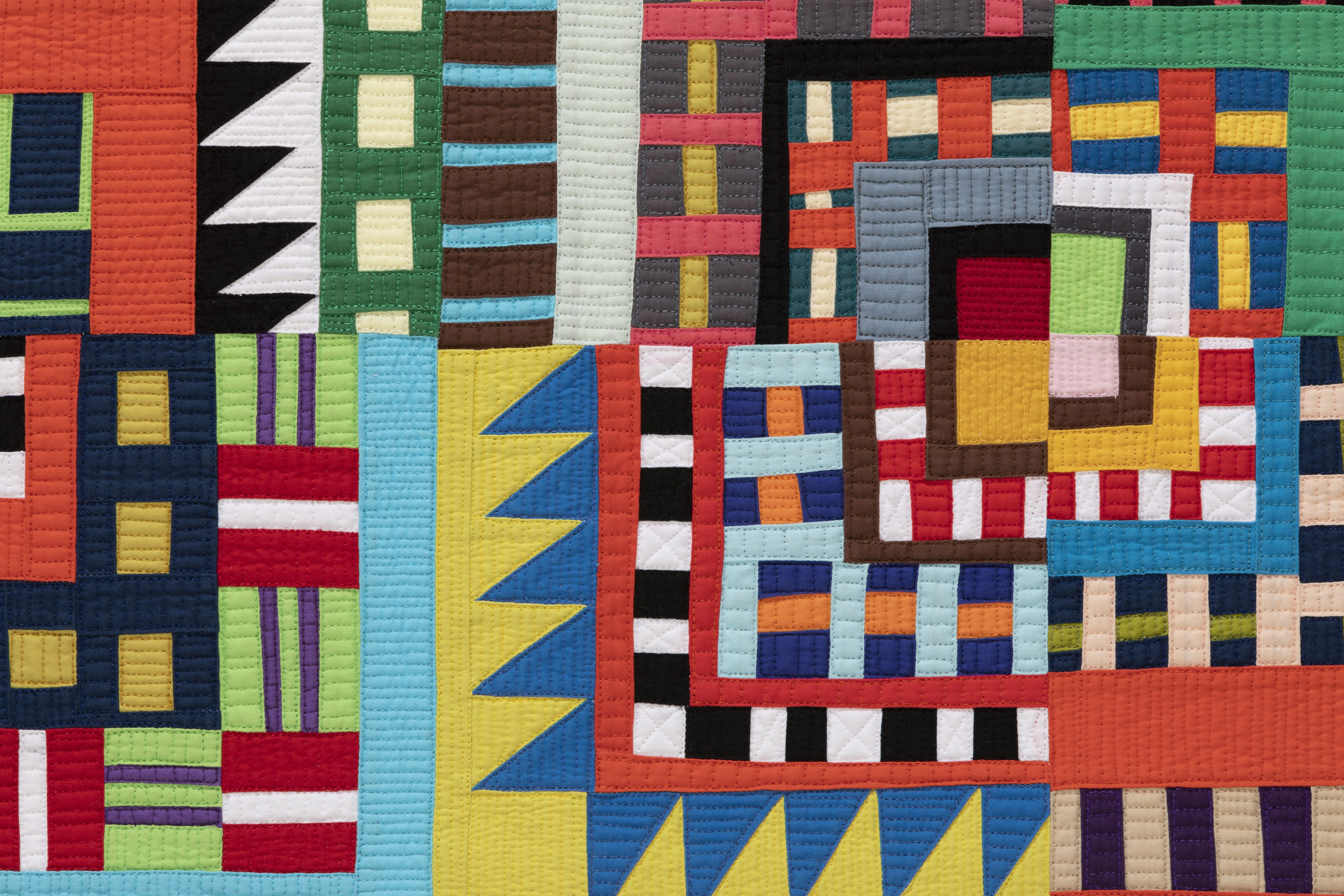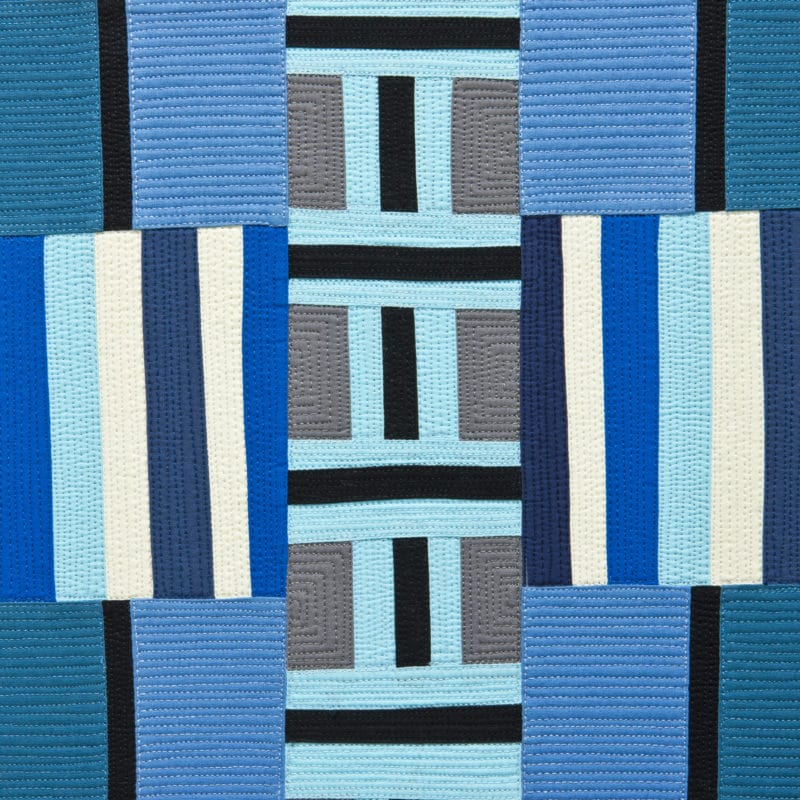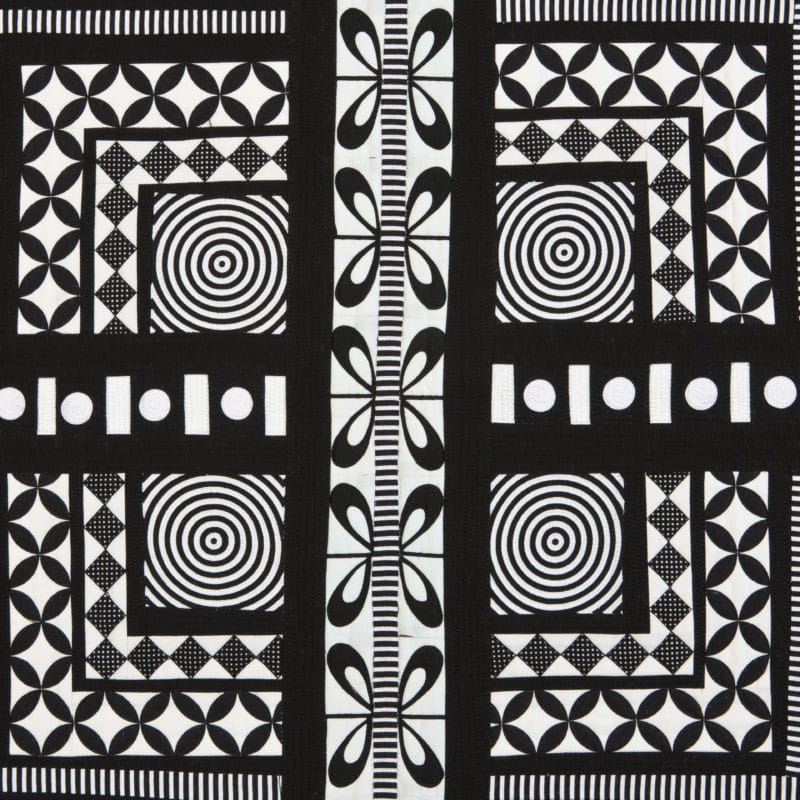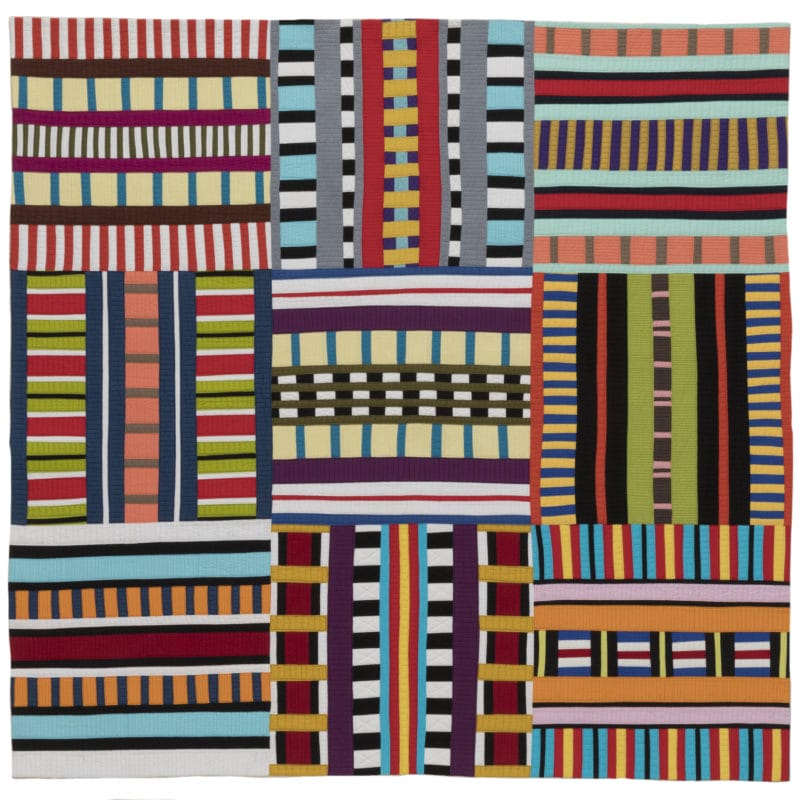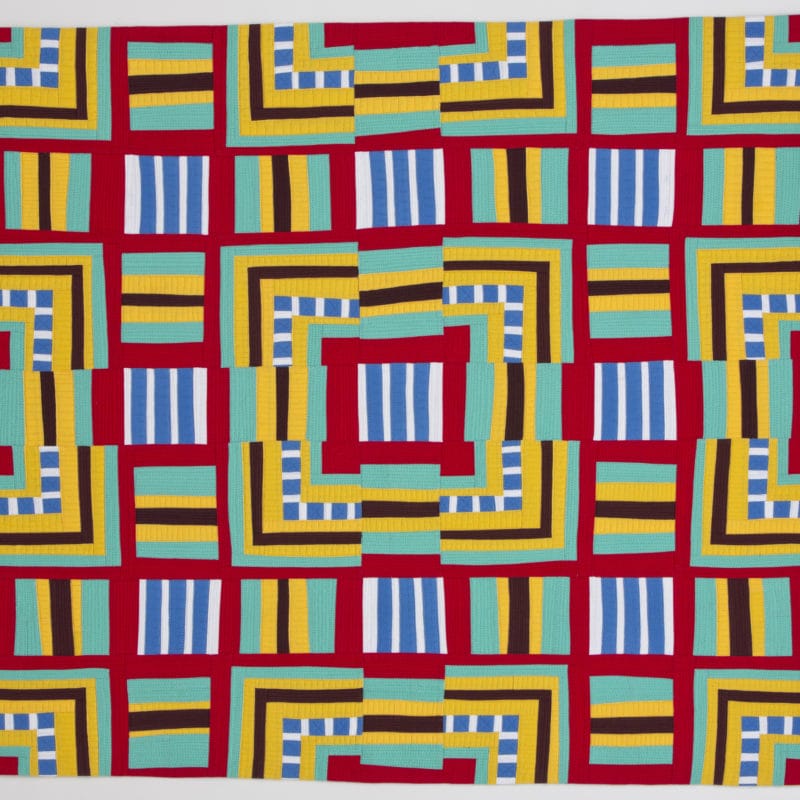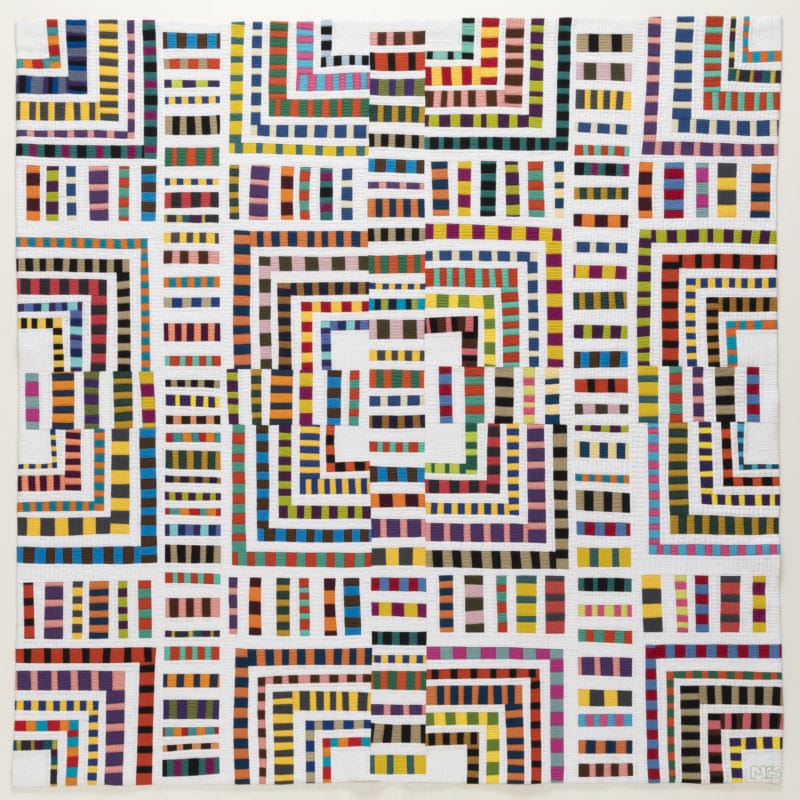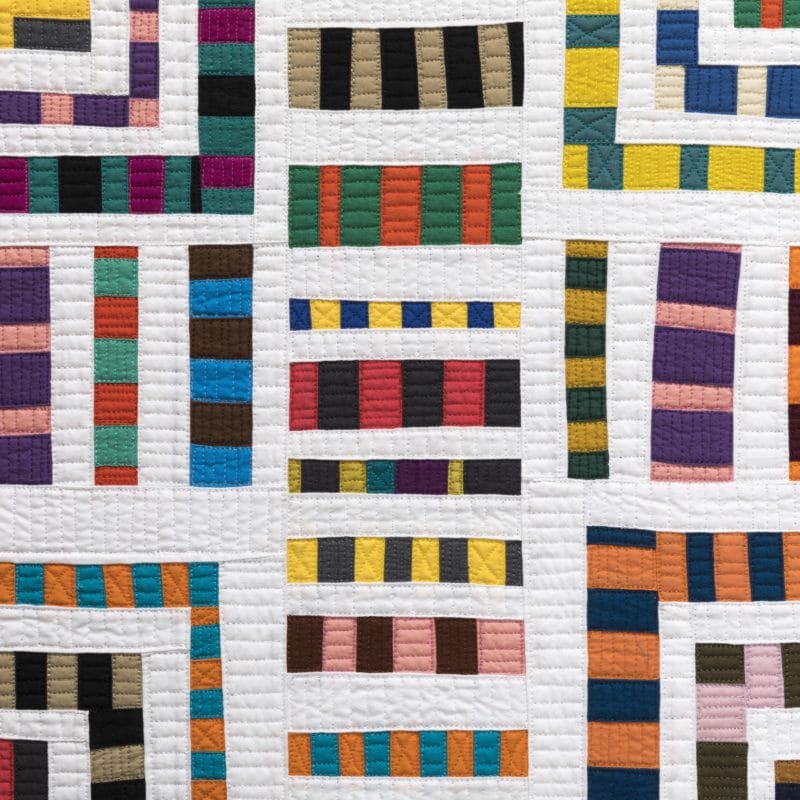Interview with Maria Shell

The textile artist from Anchorage, Alaska, Maria Shell, creates works that are artwork is firmly grounded in the craft of quiltmaking and that honor the American textile tradition.
Unlike many textile artists who avoid the word “quilt” to define their artworks, trying to bury any reference to tradition, Maria makes tradition and history the starting point of her creative and artistic path. Her quilts, in fact, are the result of the study and practice of classic patchwork blocks that the artist revisits and transforms in different ways, exploring and experimenting with contemporary techniques of textile composition and use of color. The taste and aesthetics of her distinctly modern art quilts, make them dynamic, vibrant and certainly very interesting and original.
Maria Shell’s works have been exhibited in numerous international group and solo exhibitions, receiving numerous awards and prizes.
Below you will find links to the artist’s website and social media.
Facebook—Maria “the Stitcher” Shell https://www.facebook.com/mariacshell/?ref=settings
Instagram—Tales of a Stitcher https://www.instagram.com/talesofastitcher/
Blog—Tales of a Stitcher https://talesofastitcher.com/
Website— https://mariashell.com
Can you tell us your story as a textile artist, how you started and why?
I have always sewn. I started hand sewing when I was four. My mother bought me my first sewing machine when I was ten. That really was the deal. At that point, I began to make all of my own clothes. I sewed almost my entire life. In 2000 when my family to Valdez, Alaska for my husband’s job, I discovered quilting. I started my first quilt in a workshop offered at the Calico Whale. Within months, I was working at the quilt store and teaching workshops. I knew from my very first quilt that I had to figure out a way to make a living as a quilt artist because that is what I wanted to be. Knowing that I wanted to make quilts was easy. Finding the way to making a living as a quilt artist was hard.
In the path you took to become a textile artist, was there an event or a person that proved to be important for your professional growth? Can you talk about it?
There were several people who were instrumental in my quilting life. The owner of the Calico Whale, Trudy Koszarek, and her workshop instructors, Jody Morgan and Lil Dillion, were incredibly supportive of my early work. I feel very fortunate to have been involved in a quilt shop that supported creativity and originality over selling the latest notion or kit.
In 2009, I received a Rasmuson Grant to study with Nancy Crow for three weeks. Since then, I have attended her workshops whenever I can fit them into my budget and schedule. Learning from Nancy Crow is an intense experience that shaped the direction of my work especially my ability to use color and layer pattern.
How has your work evolved over time? What are the differences between your early artworks and your most recent ones?
In the very beginning, I was obsessed with mastering traditional quilt techniques. In particular, I wanted to be able to do complex piece work and intricate quilting. After studying with Nancy Crow, I became more interested in how American Patchwork can be used to create interesting figure ground compositions. I have always been fascinated with color. I am continually trying to push conventional notions of color in quilt making.
Can you describe the birth and development of one of your art quilts? How do you plan a new artwork? Can you tell us something about the techniques you use?
For almost ten years, I have been working with the traditional quilt block Crossed Square. Because of the way this quilt block is structured—with pieced lines going through the block both horizontally and vertically— it can be used to create endless variety. I have been expanded, contracted, multiplied, and colored that block in for many years.
If I am not pushing around the Crossed Square block to see what it can do next, I frequently find inspiration in prompts. These prompts come from call for entry or from Cloth in Common an art quilt group I belong to.
I also like to start with a line sketch. If I can get a black and white drawing to vibrate, I know that I am going in the right direction.
My techniques are simple and straight forward—I cut, stitch, and press.
Do you work in series? Why?
I have three on-going series that I really like.
The Color Grid series is based on the Crossed Square quilt block.
My Chair series is exactly that—chairs.
And I have really been trying to find time to explore a new series based on the traditional quilt block Flowering Snowball.
For me, working in a series is a way of restricting myself so that I can go deep into the subject matter of what I am doing. It creates a starting point and a frame to hang my ideas on.
Among your art quilts, is there one you are more attached to?
I do have my favorites. Color Unfurled is one of the best things I have ever made. I created it to celebrate President Obama’s historic run for presidency. You can read more about that quilt in this blog post.
Maria, your quilts are contemporary but still linked to the American traditional quilt. Can you tell us why and what you are interested in the tradition of quilting and how all this influences the style of your artwork?
Many quilt artists of our time are focused on moving this medium away from patchwork and the tradition that underlies such work. For these artists, there is a stigma to being associated with the craft of quilt making. The fact that quilt making is not taught at the university level compounds this situation. If students wish to explore quilt making, they are encouraged to do so in alternative mediums. Quilts made of hair and plastic are encouraged and common. The painstaking skills required to measure, cut, and stitch are not.
I want to claim patchwork and the craft required to make it in the way Dale Chihuly claimed glass, Anne Sexton claimed the personal, and Banksy claimed the wall. The blocks used in traditional quilt making–from Rail Fence to Ohio Star–are a legitimate and profound sources of inspiration for crafting visual art. For me, grounding my work in the traditional skill sets of past quilt makers is a celebration and acknowledgement of the backs I am standing on.
I ask you a question that I often ask to the artists I interview: first the technique or the creativity? What do you think determines the success of an art work? When does creativity risk being suffocated by technique?
For me, craft and the creativity are one and the same. It really is about getting into the studio and doing the work—My hands are the conduit for the ideas that appear when I am present in the studio. I think in the language of American Patchwork. I am always trying to see what can I do that is new and exciting with this old artform. While my ideas may be new, my craft or tradition is not.
What are you working on right now? Do you want to tell us about your current textile projects?
I am trying very hard to get into and stay in the studio to create new work for an upcoming exhibition. I am hoping that that work will be based on the curved quilt block Flowering Snowball.
